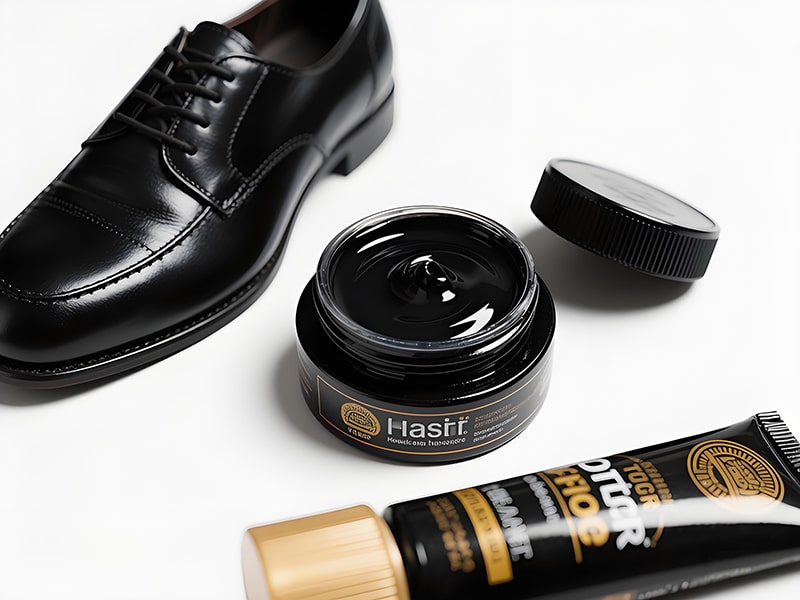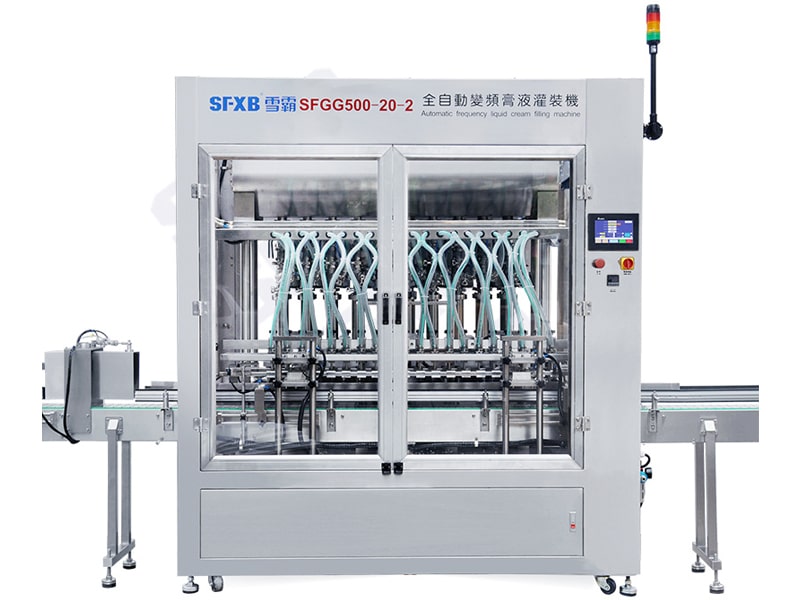The global shoe polish market is projected for continued growth, fueled by a renewed focus on footwear care and maintenance. As demand surges, shoe polish manufacturers are under pressure to optimize production efficiency and maintain consistent product quality. At the heart of achieving these goals lies the shoe polish filling machine – a critical component in any cream filling line. This comprehensive buyer’s guide for 2025 provides in-depth insights into selecting the right shoe polish filling machine, ensuring you invest in equipment that meets your current needs and future growth aspirations. We, at Xueba Pack, are dedicated to providing cutting-edge packaging and filling solutions, and this guide reflects our expertise in helping you navigate the complexities of the market.

Why a Shoe Polish Filling Machine is Crucial for Your Business
A shoe polish filling machine automates the process of dispensing cream or paste-like shoe polish into containers, offering numerous advantages over manual filling methods:
● Increased Production Speed & Efficiency: Filling machines significantly accelerate production rates, enabling manufacturers to meet growing demand and optimize throughput. Automated systems can fill hundreds or even thousands of containers per hour, a stark contrast to the limitations of manual filling.
● Enhanced Accuracy and Consistency: These machines deliver precise fill volumes, minimizing product waste and ensuring consistent fill levels in every container. This consistency is crucial for maintaining brand reputation and customer satisfaction. Inaccurate filling can lead to product spoilage, inaccurate labeling, and dissatisfied customers.
● Reduced Labor Costs: By automating the filling process, businesses can reduce their reliance on manual labor, leading to significant cost savings over time. These savings can be reinvested in other areas of the business, such as marketing or research and development.
● Improved Hygiene and Safety: Automated filling minimizes human contact with the product, reducing the risk of contamination and ensuring higher hygiene standards. This is particularly important in the production of consumer goods where safety and purity are paramount.
● Enhanced Product Presentation: Consistent fill levels and clean filling processes contribute to a more professional and appealing product presentation, enhancing shelf appeal and consumer perception.
Understanding the Different Types of Shoe Polish Filling Machines
The market offers a variety of shoe polish filling machine types, each with its own strengths and weaknesses. Choosing the right type depends on your specific production needs, budget, and the characteristics of your shoe polish formulation.
● Piston Filling Machines: These machines use a piston to draw and dispense a precise volume of shoe polish. They are known for their accuracy, versatility, and ability to handle viscous products. Piston fillers are generally suitable for a wide range of container sizes and shapes. They are a good choice for manufacturers who need to handle different types of shoe polish or who want to adjust the fill volume frequently. From our extensive experience at Xueba Pack, we find that piston fillers are very versatile and reliable for the shoe polish industry.
● Rotary Piston Filling Machines: A higher-capacity version of the piston filler, rotary piston fillers utilize multiple pistons arranged on a rotating carousel for increased throughput. These are ideal for high-volume production environments. They offer the same accuracy and versatility as standard piston fillers but with significantly higher production rates. This type of filler is often integrated into a complete cream filling line.
● Gear Pump Filling Machines: Gear pump fillers utilize a rotating gear mechanism to draw and dispense the shoe polish. They are often favored for their gentle handling of shear-sensitive products. This is a consideration if your shoe polish formulation contains ingredients that could be damaged by more aggressive pumping methods.
● Peristaltic Pump Filling Machines: These machines use a peristaltic pump to squeeze a flexible tube, drawing and dispensing the product. They are known for their hygienic design, as the product only comes into contact with the tube. They are an excellent choice for sterile or aseptic filling applications.
● Volumetric Filling Machines: Volumetric fillers measure the product by volume rather than weight or pressure. These can be gravity-fed or utilize positive displacement pumps. They are generally less precise than piston or gear pump fillers but offer a cost-effective solution for less demanding applications.
● Net Weight Filling Machines: These machines fill based on the weight of the product in the container, offering very high accuracy. They use load cells to measure the weight and stop the filling process when the target weight is reached.
Key Factors to Consider When Choosing a Shoe Polish Filling Machine
Selecting the optimal shoe polish filling machine requires careful consideration of several key factors:
● Production Volume: Determine your current and projected production volume requirements. Choose a machine that can handle your peak demand without bottlenecks. Over-specifying the machine can lead to unnecessary costs, while under-specifying can limit your ability to meet demand.
● Viscosity and Consistency of Shoe Polish: Consider the viscosity and consistency of your shoe polish formulation. Some machines are better suited for thicker pastes, while others are ideal for thinner creams. Testing different types of fillers with your specific shoe polish formulation is crucial.
● Container Type and Size: Ensure the machine can accommodate the types and sizes of containers you use, whether they are tins, jars, or tubes. Consider adjustable features for flexibility.
● Accuracy and Precision Requirements: Define your required fill accuracy and precision. This will determine the type of filling mechanism you need. The acceptable tolerance for fill volume is a critical parameter.
● Hygiene and Sanitation: Prioritize machines with hygienic designs that are easy to clean and sanitize. Look for features like stainless steel construction and readily accessible components. Compliance with food safety regulations (if applicable) is essential.
● Ease of Operation and Maintenance: Choose a machine that is user-friendly and easy to maintain. Look for machines with clear instructions, readily available spare parts, and accessible maintenance points.
● Automation Level: Decide on the level of automation you require. Options range from semi-automatic machines that require manual loading and unloading to fully automatic systems that integrate seamlessly into a complete cream filling line.
● Budget: Establish a budget for the machine and factor in costs for installation, training, and maintenance. Consider the total cost of ownership (TCO), which includes the initial purchase price, operating costs, and maintenance expenses.
● Integration with Cream Filling Line: Consider how the filling machine will integrate with other components of your cream filling line, such as labeling machines, capping machines, and cartoning machines.
● Supplier Reputation and Support: Choose a reputable supplier with a proven track record and excellent customer support. Look for suppliers who offer training, technical support, and readily available spare parts. Xueba Pack prides itself on providing comprehensive support to our customers, from initial consultation to after-sales service.
Components of a Complete Cream Filling Line
While the shoe polish filling machine is the core element, a complete cream filling line typically comprises several other components working in unison:
● Unscrambler: Organizes and feeds empty containers onto the filling line.
● Filling Machine: Dispenses the precise amount of shoe polish into each container.
● Capping Machine: Applies and secures the caps onto the filled containers.
● Labeling Machine: Applies labels to the containers, displaying product information.
● Coding Machine: Prints date codes, batch numbers, or other information onto the containers.
● Cartoning Machine: Packages the filled and labeled containers into cartons for shipping.
● Conveyor System: Transports containers between each station in the line.
Future Trends in Shoe Polish Filling Technology
The shoe polish filling machine industry is constantly evolving, with new technologies emerging to improve efficiency, accuracy, and flexibility. Here are some key trends to watch for:
● Smart Filling Machines: Integration of sensors, data analytics, and artificial intelligence (AI) to optimize filling performance, predict maintenance needs, and improve overall efficiency. These “smart” machines can automatically adjust fill parameters based on real-time data.
● Robotic Filling Systems: Use of robots for loading, unloading, and handling containers, further automating the filling process and reducing labor costs. Robotic systems offer flexibility and precision in handling delicate or irregularly shaped containers.
● Flexible Filling Machines: Machines that can quickly and easily switch between different container sizes and product formulations, allowing manufacturers to respond quickly to changing market demands.
● Sustainability Focus: Emphasis on energy-efficient machines and the use of sustainable materials in construction.
● Hygienic Design Enhancements: Continued focus on improving the hygienic design of filling machines to minimize the risk of contamination and ensure product safety.
Why Choose SFXB for Your Shoe Polish Filling Machine Needs?
At Xueba Pack, we are committed to providing our customers with high-quality, reliable, and efficient shoe polish filling solutions. We offer a wide range of filling machines to meet the diverse needs of the shoe polish industry, from small-scale startups to large-scale manufacturers.
● Extensive Experience: We have years of experience in designing, manufacturing, and installing shoe polish filling machines and complete cream filling lines.
● Customized Solutions: We understand that every customer has unique needs. We work closely with our clients to develop customized filling solutions that meet their specific requirements.
● High-Quality Equipment: We use only the highest quality materials and components in our machines, ensuring long-lasting performance and reliability.
● Excellent Customer Support: We provide comprehensive customer support, from initial consultation to after-sales service. Our team of experienced technicians is available to answer your questions and provide technical assistance.
● Competitive Pricing: We offer competitive pricing on all of our products and services.
 |
XBGG series automatic multi-head servo drive piston filling machine
Suitable for filling various sauces, pastes and liquids, with strong versatility |
Conclusion
Investing in the right shoe polish filling machine is a critical decision for any shoe polish manufacturer. By carefully considering the factors outlined in this buyer’s guide, you can choose a machine that will meet your production needs, improve efficiency, and enhance product quality. At Xueba Pack, we are ready to partner with you to provide the best possible filling solutions for your business. Contact us today to learn more about our shoe polish filling machines and complete cream filling lines.
| References: | |
| 1. | Shoe Care Market Size, Share & Trends Analysis Report By Product (Shoe Polish, Shoe Clean, Shoe Care Accessories), By Application (Formal Shoes, Casual Shoes, Sports Shoes), By Distribution Channel, By Region, And Segment Forecasts, 2024 – 2030 Retrieved from: https://www.grandviewresearch.com |
| 2. | Packaging Machinery Market Size & Share Analysis – Growth Trends & Forecasts (2025 – 2031) Retrieved from: https://www.mordorintelligence.com |
| 3. | 《Food and Drug Administration (FDA) Guidance for Industry: Cosmetic Packaging)》 Retrieved from:https://www.fda.gov |






Comments